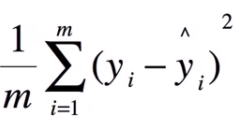张量操作与线性回归
张量的操作:拼接、切分、索引和变换
一、张量的拼接与切分
1.1 torch.cat(tensors, dim=0, out=None)
功能:将张量按维度dim进行拼接
- tensors: 张量序列
- dim: 要拼接的维度
1.2 torch.stack(tensors, dim=0, out=None)
功能:在新创建的维度dim上进行拼接
- tensors: 张量序列
- dim: 要拼接的维度
1.3 torch.chunk(input, chunks, dim=0)
功能: 将张量按维度dim进行平均切分
返回值:张量列表
注意事项:如果不能整除,最后一份张量小于其他张量,向上取整
- input: 要切分的张量
- chunks: 要切分的份数
- dim: 要切分的维度
1.4 torch.split(tensor, split_size_or_sections, dim=0)
功能:将张量按维度dim进行切分
返回值:张量列表
- tensor: 要切分的张量
- split_size_or_sections: 为 int 时,表示每一份的长度;为 list 时,按list元素切分
- dim: 要切分的维度
二、张量的索引
2.1 torch.index_select(input, dim, index, out=None)
功能:在维度 dim 上,按 index 索引数据
返回值:依 index 索引数据拼接的张量
- input: 要索引的张量
- dim: 要索引的维度
- index: 要索引数据的序号,多个序号用list,dtype必需为torch.long
2.2 torch.masked_select(input, mask, out=None)
功能:按mask中的True进行索引
返回值:以为张量
- input: 要索引的张量
- mask: 与 input 同形状的布尔类型张量
三、张量变换
3.1 torch.reshape(input, shape)
功能: 变换张量的形状
注意事项:当张量在内存中是连续时, 张量与 input 共享数据内存
- input: 要变换的张量
- shape: 新张量的形状
3.2 torch.transpose(input, dim0, dim1)
功能: 交换张量的两个维度
- input: 要变换的张量
- dim0: 要交换的维度
- dim1: 要交换的维度
3.3 torch.t(input)
功能:2维张量转置,对矩阵而言,等价于 torch.transpose(input, 0, 1)
3.4 torch.squeeze(input, dim=None, out=None)
功能:压缩长度维1的维度(轴)
- dim: 若为None,移除所有长度为1的轴;若指定维度,当且仅当该轴长度为1时,可以被移除;
3.5 torch.unqueeze(input, dim, out=None)
功能:依据dim扩展维度
- dim: 扩展的维度
张量的数学运算
一、加减乘除
torch.add(input, alpha=1, other, out=None)
功能:逐元素计算input + alpha x other
torch.addcdiv(input, value=1, tensor1, tensor2, out=None)
功能:out = input + value x (tensor1 / tensor2)
torch.addcmul(input, value=1, tensor1, tensor2, out=None)
功能:out = input + value x tensor1 x tensor2
torch.sub()
torch.div()
torch.mul()
二、对数,指数,幂函数
torch.log(input, out=None)
torch.log10(input, out=None)
torch.log2(input, out=None)
torch.exp(input, out=None)
torch.pow()
三、三角函数
torch.abs(input, out=None)
torch.acos(input, out=None)
torch.cosh(input, out=None)
torch.cos(input, out=None)
torch.asin(input, out=None)
torch.atan(input, out=None)
torch.atan2(input, other, out=None)
线性回归
线性回归是分析一个变量与另一(多)个变量之间关系的方法
因变量: y
自变量: x
关系: 线性 y = wx + b
分析:求解w,b
求解步骤:
1、确定模型
Model: y = wx + b
2、选择损失函数
MSE: 
3、求解梯度并更新w, b
w = w - LR * w.grad
b = b - LR * w.grad
作业:调整线性回归模型停止条件以及y = 2*x + (5 + torch.randn(20, 1))中的斜率,训练一个线性回归模型
import torch
import matplotlib.pyplot as plt
torch.manual_seed(10)
lr = 0.01 # 学习率 20191015修改
best_loss = float("inf")
# 创建训练数据
x = torch.rand(200, 1) * 10 # x data (tensor), shape=(20, 1)
y = 2*x + (5 + torch.randn(200, 1)) # y data (tensor), shape=(20, 1)
# 构建线性回归参数
w = torch.randn((1), requires_grad=True)
b = torch.zeros((1), requires_grad=True)
for iteration in range(1000):
# 前向传播
wx = torch.mul(w, x)
y_pred = torch.add(wx, b)
# 计算 MSE loss 0.2是为了求导时消掉2设置的,没干系
loss = (0.5 * (y - y_pred) ** 2).mean()
# 反向传播
loss.backward()
current_loss = loss.item()
if current_loss < best_loss:
best_loss = current_loss
best_w = w
best_b = b
# 绘图
if iteration % 20 == 0:
plt.scatter(x.data.numpy(), y.data.numpy())
plt.plot(x.data.numpy(), y_pred.data.numpy(), 'r-', lw=5)
plt.text(2, 20, 'Loss=%.4f' % loss.data.numpy(), fontdict={'size': 20, 'color': 'red'})
plt.xlim(1.5, 10)
plt.ylim(8, 28)
plt.title("Iteration: {}\nw: {} b: {}".format(iteration, w.data.numpy(), b.data.numpy()))
plt.pause(0.5)
# 终止条件
if loss.data.numpy() < 0.55:
break
# 更新参数
b.data.sub_(lr * b.grad)
w.data.sub_(lr * w.grad)
# 清零张量的梯度
w.grad.zero_()
b.grad.zero_()
























 2380
2380











 被折叠的 条评论
为什么被折叠?
被折叠的 条评论
为什么被折叠?








